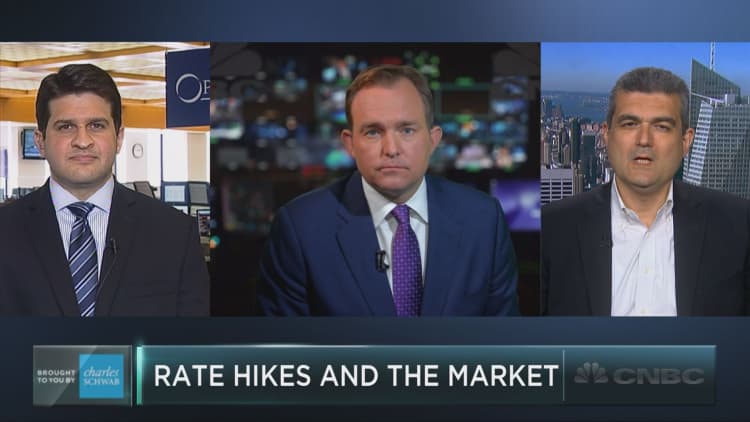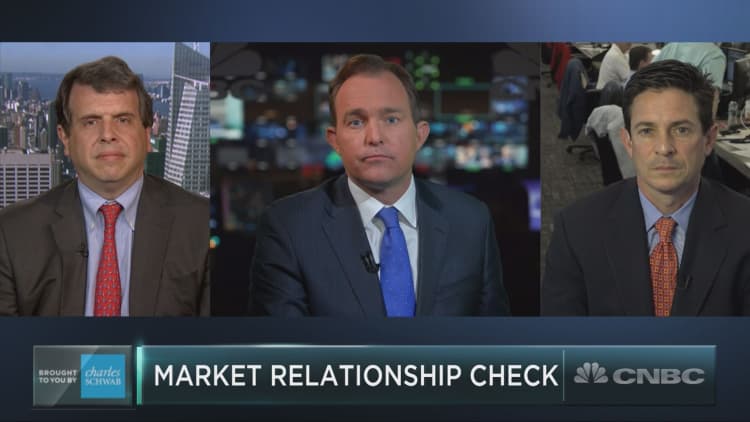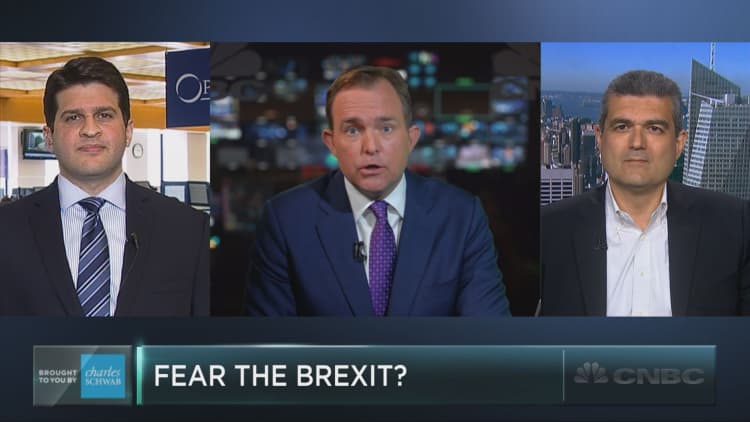


It's been a quiet few months for stocks. Actually, in a way, it's been a quiet couple years: The hasn't fallen below 1,810 or risen above 2,135 since February 2014.
Still, the lack of activity in recent days has been noticeable. It is worth noting, for instance, that Monday was the lowest-volume day of the year for the popular S&P 500-tracking ETF SPY.
And according to Jonathan Krinsky, technical analyst at MKM Partners, the S&P's monthly Bollinger Bands are now in their narrowest range in more than 20 years.
Bollinger Bands are a tool occasionally used by technical analysts to determine how high or low prices currently are, as compared to a combination of their moving average and their standard deviation over a certain number of periods.
Since volatility on a monthly basis has been declining precipitously, and the market is trading closely in line with its recent average prices, those bands currently have a width of 12 percent, which is the narrowest they've been since 1995. Besides 1994-1995 and today, there have been three other periods when the bands have been this tight: 1977, 1960 and 1948.
The historical reaction to these conditions is mixed, but when this happened about 20 years ago, the S&P 500 found itself 23 percent higher in a year's time.
Using Bollinger Bands to make trading decisions has a few obvious problems: They generally don't include enough periods to lend any statistical significance, the non-normal distribution of market returns means that standard deviation measures are of limited use and there is no evidence that a Bollinger Band-based strategy outperforms buying and holding.
Yet what the current state of the S&P's monthly Bollinger Bands may speak to is the sense of vague uncertainty and malaise that has spread like kudzu among investors.
According to the American Association of Individual Investors Sentiment Survey released Thursday, neutral sentiment among investors has been above 40 percent for 10 straight weeks; neutrality has been above its historical average of 31 percent for 68 weeks out of the past 72.
While the market always has "unknowns" to contend with, two key events in the next month could explain this neutral miasma. The U.K.'s referendum on whether to leave the European Union is being held June 23, and many strategists and economists have warned that a decision to exit could take a substantial bite out of risk appetites and global growth.
In the week prior, the Federal Reserve's June policy statement is destined to be a major event, as the U.S. central bank either raises rates, sets investors up for a hike in July, or pushes tightening off into the future.
According to Oppenheimer technical analyst Ari Wald, any worries about a rate hike may be misplaced. He pointed out Monday on CNBC's "Trading Nation" that stocks tend to rise, rather than fall, in the year after the first rate increase.
Still, until the uncertainty breaks and the risk environment appears more easily understood, quiet and neutral may continue to be the labels that stick to this market.








